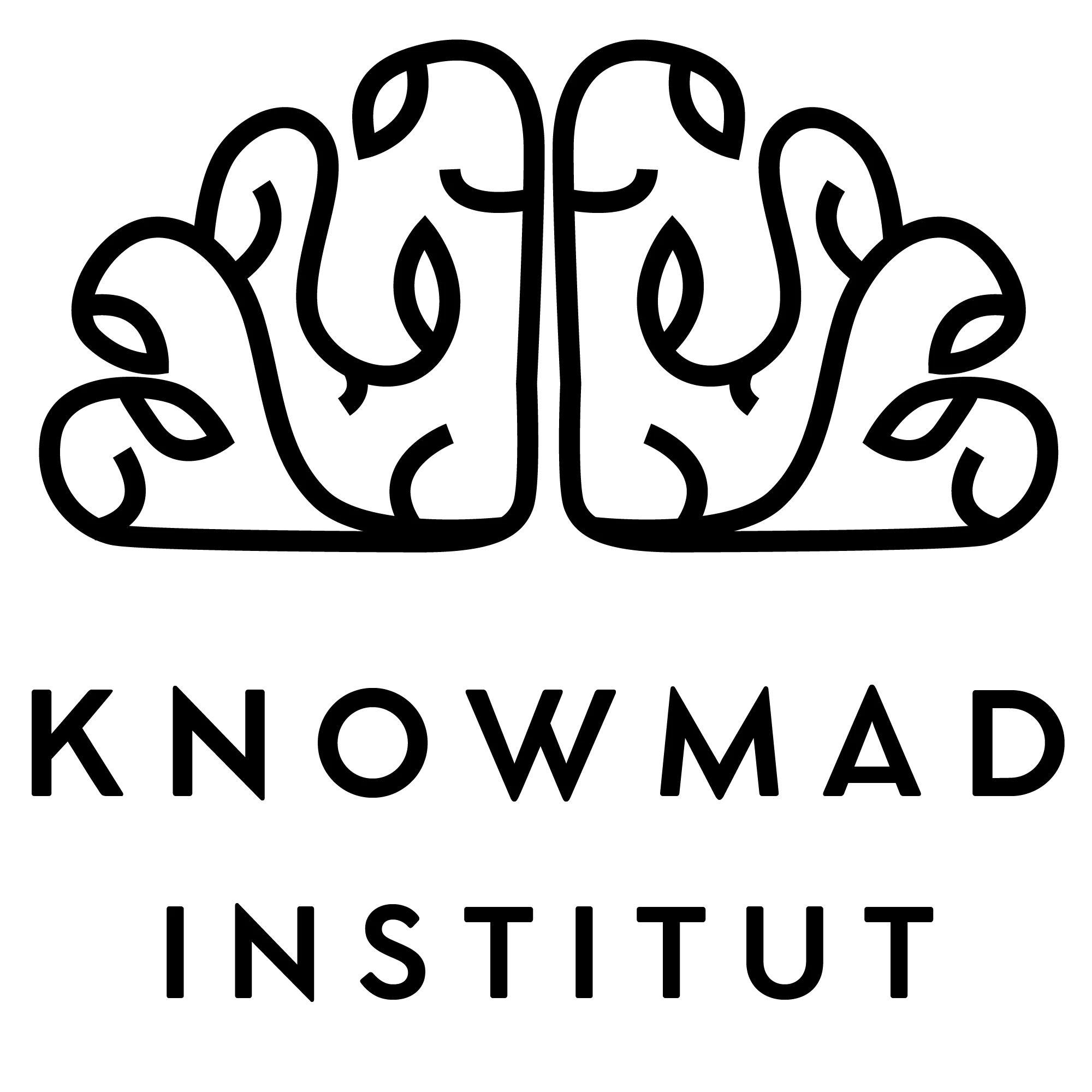INTRODUCTION
Observing the link between human beings and psychoactive substances throughout history, it can be seen that the spiritual/ritual and therapeutic use of medicinal plants and mushrooms was known and has been practiced in all cultures and times, with their particularities. And although Western culture demonized medicinal plants/mushrooms and/or psychoactive substances, prohibiting their ritual and therapeutic use, today it is still usual1 in many places and there is a growing interest from scientific medicine.
This contribution aims to provide a brief overview of the international prohibition of psychoactive substances, with the intention of making visible that there has been a contempt against herbal medicine and how it has come to be re-recognized as having invaluable potential as a tool for public health. This includes medicinal plants in general, psychedelic mushrooms and other illegalized substances that have therapeutic use. They are referred to as illegalized because as will be seen, they were banned by hegemonic international entities in an attempt to eradicate them or to preserve knowledge in exclusive and excluding circles.
I. A BRIEF REVIEW OF THE PROHIBITION
The prohibition of medicinal plants in general, and psychoactive substances in particular, is a heavy legacy that can be followed until the end of the fifteenth century, beginning of the sixteenth. Under the iron fist of Pope Innocent VIII and Pope Clement VII, who banned respectively cannabis and coffee.2 Over time this necropolitics has clearly evolved as a neo-colonial tool.
Towards the middle of the 18th century, the knowledge of the practical nature that came from the magical-religious world began to be considered a sanitary fallacy3 by academic medicine and the incipient pharmaceutical industry. Thus, the traditional uses of herbal medicines, the knowledge of traditional medicine and the therapeutic activity of the native peoples who had effective methods at their disposal were ignored and rejected, because its base was not “rational” for modern European sciences.
If prohibitionist policies deepened the lack of knowledge about ritual, traditional medicine and psychoactive substances, it was not until the 20th century that they were established at the global level.
Specifically with the 1909 International Opium Commission meeting in Shanghai4 and The Hague International Opium Convention of 1912,5
6 prohibitionism became internationalised as an ideology.7 The 1925 Geneva Convention8 initiated restrictions on medical and scientific uses, as well as on the production and sale of certain pharmaceuticals derived from “controlled” plants.
By the 1960s, there were already several initiatives (with more or less success) to claim the rights of the use of certain substances in the religious practices of some indigenous groups.9 It was in 1961, with the “Single Convention”,10 that it was introduced for the first time in an international instrument, the explicit objective of putting an end to all traditional uses and therapeutic activities that applied herbal medicines. The convention forced peripheral countries to eliminate all non-medical or scientific uses of opium poppy, coca and cannabis,11 which are precisely some plants considered sacred and medicinal for various cultures.121314
The international control model close its current canon with the Convention on Psychotropic Substances in 1971,1516 under which the World Health Organization (WHO) is mandated to evaluate international policy on psychedelic substances.17
In 2008, in the run-up to the 100th anniversary of the Shanghai International Opium Commission, the United Nations Office on Drugs and Crime (UNODC) admitted that the international drug control model has caused unwanted consequences, such as a shift of public health into the background.18
Shortly thereafter, immersed in a bloody war on drugs, the presidents of Colombia, Guatemala and Mexico called on the UN General Assembly in September 2012 to host a special assembly on drug policies that resulted in UNGASS 2016.19
The final document of this special assembly (UNGASS 2016)20 marks (despite its obvious shortcomings) a step towards drug policies that take into account human rights and public health. Even the Post-UNGASS process has resulted in the first scientific review of Cannabis L. by the WHO.21 At the same time, a trend has emerged that seeks reform of cannabis policies and also a boom in research and initiatives related to psychedelic substances, especially Peyote, Ayahuasca and Psylocibine.
The policies and treaties that emphasize the eradication of plant species and the criminalization of People Who Use Drugs (PQUD), were mostly promoted by the government of the United States of America (USA). And, although it continues to invest large amounts of money in this, it is currently reforming its domestic drug policies, especially due to the opioid crisis and the ineffectiveness of prohibitionism in combating drug trafficking and/or demand reduction. Only a few developed countries are still seeking to increase current repressive measures.
As we can observe all over the world, prohibitionism has generated dire consequences: thousands of deaths annually in the failed “war on drugs”, the break with cognitive freedom2223 and the knowledge of millennial traditions, leading to a deterioration of the ethnosphere,24 etc.
“The proposed new mental health paradigm accepts the cultural rights and uses of the indigenous tribes and ethnic minorities who traditionally consume these substances. This is in favor of the utilization of the sacred plants by these groups, whose ritual heritage, religious wisdom, and medicinal knowledge are today being negatively affected.
Mental health cannot be obtained if a patient is being considered a criminal and is discriminated for the cultural use of the sacred plants.”25
Disinformation, fundamentalism and the consequences of the westernization of knowledge remain the great challenge to overcome the global problems generated by the war on drugs and the obstacle to the protection of the ethnosphere and the human dignity.
That is why it is so relevant to observe that various disciplines such as anthropology, psychology, theology, medicine, ethnobotany, neuroscience, biology or chemistry have systematically studied the importance of these plants. In recent years a revaluation of the ancestral wisdom of the originary peoples has emerged and the search for a true dialogue of knowledge that complements this knowledge with that of the dominant cultures.
II. FOURTH INDUSTRIAL REVOLUTION (4IR), MENTAL HEALTH & PSYCHEDELICS
In the framework of the Fourth Industrial Revolution (in which we find ourselves at this historical moment), bioethics and standards in mental health services and public policies are becoming more important due to the macro impact of the development of technologies such as artificial intelligence, facial recognition or bio-locomotion recognition and robotization, to mention a few.
A vital issue will be about mental health in the workplace, as it can have serious consequences for society as a whole.
Today, technologies have enabled the emergence of new ritual practices and spiritualities, a fascinating phenomenon that has mutated from the originary communities and peoples up to transmitting this knowledge in an oral and practical way to the major cities.26
On the one side, the conducive use of Cannabis, Ayahuasca, cactus and psilocybin is increasing in the cities of the world. Among other causes, also, thanks to the increase of programs and public policies of harm reduction and risk management.
On the other side, it should not be forgotten that Silicon Valley’s corporate culture has popularized the use of micro-doses of psychedelic substances (obtained on the black market) to increase labor production. This use has not yet been sufficiently researched, however, motivation and testimonials suggest an improvement in the sense of well-being.2728
It is this corporate culture that has financed and supported advances in research and promoted political reforms related to the control of these substances, but at the same time there is a danger of privatization and centralization of knowledge and therapeutic practices related to psychedelics.
The conditions for mental health in the environments where emerging technologies are developed are not the most adequate and due to their bioethical implications and macro-social impact they represent a latent danger in the evolution of critical infrastructures and technologies in the framework of the Fourth Industrial Revolution (4IR).
In the future we can expect an important role of plants, medicinal mushrooms and their active principles, together with safe substances such as LSD and MDMA29303132 in public health systems. They will contribute to the enrichment of intercultural medicine, multidisciplinary therapies and the use of deep learning and artificial intelligence in ethnobotanical research.
“Two facts force us to rethink our world: coexistence with seemingly limitless artificial minds and memories, and our growing interest in modifying and expanding our own limited human minds. At the crossroads of these critical issues are privacy and dignity.”33
At this crossroads, a phenomenon of feedback and synchronicity can be seen in the processes34 of development of emerging technologies, the preservation of the ethnosphere, research on psychedelics and public policies on mental health.35
A specific example of this phenomenon would be the adoption of technologies such as Artificial Intelligence and Blockchain to protect and preserve the ethnosphere, with knowledge of therapeutic practices, traditional medicines and herbal medicines contributing to the research and development of current models and protocols for therapeutic and medicinal uses of psychedelic substances. These models and protocols in turn contribute to the quality of public mental health services and through ethical and democratized implementation, will ensure healthy and ethical progress of critical technologies under development.
The uncertainties of the 4IR and the generalised socio-political instability make it more evident that a response is needed that breaks with the policies linked to prohibitionism. This requires the strengthening and opening of democratized political spaces where knowledge is generated and managed to promote an inclusive and decentralized local, regional and international debate.
Political and public incidence of civil society and academia have achieved important advances in the first two decades of the 21st century, being the Sustainable Development Goals (SDGs) together with other instruments the ones that managed to consolidate this progress in the last quinquennium of the past decade.
It is through the SDGs that multi-stakeholder alliances can be made that operate in a precise and transparent manner in the ethical regulation of the evolution of emerging technologies, their industries, implement adequate public mental health policies and ensure work spaces with easy access to these services mainly for those who develop these technologies.
The civil society, influential groups, opinion makers and the private sector need a greater degree of commitment and active involvement in the defense of Mushrooms and Medical/Therapeutic/Sacred Plants at all levels, as they are part of the intangible heritage of humanity, key pieces in the ethnosphere of various cultures, a promise in the public mental health services of the future and therefore must be preserved and studied.
Public mental health policies are either developing or underdeveloped in most countries, so the opportunity to apply policies consistent with more humane drug policy models and comprehensive coverage in mental health care is present. Ending the “War on Drugs” is critical to drug policy and health policy consistent with the SDGs.
A change of perspective, greater organization and communication is needed to prevent a fundamentalist and totalitarian future. 2020 is the beginning of the decade of action where the opportunity arises to implement, the unique possibility of rediscovering ancestral knowledge with science, philosophy and new ritual forms.
Modern science and ancestral knowledge complement each other more and more, thanks to multidisciplinary research and international law. The question is no longer whether substances that are today illegal will be regulated, but rather when will it happen, and what will be the regulatory framework, what will be the models to implement, what will be the dominant strategies?
AS A CONCLUSION
To conclude these lines, it is significant to emphasize some points:
Drug prohibition has been characterized from the beginning as a necropolitics that evolved as a neocolonial tool and imposed a system of practices and knowledge to the detriment of another, ignoring the multiplicity of traditional knowledge about plant species and fungi. In this way, prohibition has legitimized the sophisms in which the prohibitionist discourse is sustained, affecting the evolution and conservation of the ethnosphere.
The adoption of emerging technologies can contribute to the democratization of knowledge and the more precise implementation of public policies, the preservation of the ethnosphere and medical research.
The relationship between intergovernmental bodies and civil society must be translated into multi-stakeholder partnerships that assume mutual and shared responsibility for the damage caused by the War on Drugs. This rhetoric must be reflected in congruence with the SDGs through concrete changes in drug control legislations, policies and practices. But, this requires funding budgets for prevention, education and multidisciplinary research on drugs, generating spaces to analyze new alternative proposals to prohibitionism, the preservation of the ethnosphere and the promotion of scientific research on the therapeutic properties of illegalized psychoactive substances.
It is time to become aware of the contexts and elements involved in finding alternative paths to prohibition as a public policy on plants and other medicinal and/or psychoactive species. Self-determination is a right, and the prohibition of the therapeutic use of certain plant species and fungi clearly violates people’s essential rights. It is time to contribute from multiple perspectives to the coming paradigm shift.
REFERENCES
- Martín-Baró, I. (1972). Del alcohol a la marihuana. Estudios Centroamericanos, ECA, 27(No. 283), 226–242. UCA.edu.sv. http://www.uca.edu.sv/coleccion-digital-IMB/articulo/del-alcohol-a-la-marihuana/
- Díaz Velásquez, M. I. (2015, December 3). La historia que Bergoglio no cambiará. Espiritualidad y sustancias psicoactivas. – Revista Factum. Revista Factum. https://www.revistafactum.com/8262-2/
- Roca, A. J. (2008). HISTORIA DE LOS MEDICAMENTOS (2nd ed., pp. 67–133). Academia Nacional de Medicina. http://www.med-informatica.com/OBSERVAMED/PAT/HistoriaMedicamentosAJacomeR_LIBRO-HX_MedicamentosANMdecolombia.pdf (Original work published 2003)
- UNODC. (2009). The 1912 Hague International Opium Convention ( timothy larose (ed.)). Unodc.Org. https://www.unodc.org/unodc/en/frontpage/the-1912-hague-international-opium-convention.html
- Hague International Opium Convention, Chapter VI. Narcotic Drugs and Psychotropic Substances (1912). https://treaties.un.org/doc/Treaties/1922/01/19220123%2006-31%20AM/Ch_VI_2p.pdf
- UNODC. (2012). 1912 International Opium Convention ( sonya yee (ed.)). Unodc.Org. https://www.unodc.org/unodc/en/speeches/2012/1912-international-opium-convention.html
- Labrousse, A. (2013). Geopolítica de las Drogas. ESD. Estudios de Seguridad y Defensa, No 1, 193–197. ESD. http://esd.anepe.cl/wp-content/uploads/2013/10/res2.pdf
- International Opium Convention Geneva / Protocol Geneva, Chapter VI. Narcotic Drugs and Psychotropic Substances (1925). https://treaties.un.org/doc/Treaties/1925/02/19250219%2006-36%20AM/Ch_VI_6_6a_6bp.pdf
- Krebs, Teri S., & Johansen, P.-Ø. (2013). Psychedelics and Mental Health: A Population Study. PLoS ONE, 8(8), e63972. https://doi.org/10.1371/journal.pone.0063972
- SINGLE CONVENTION ON NARCOTIC DRUGS, As amended by the 1972 Protocol amending the Single Convention on Narcotic Drugs, 1961 (1961). https://www.unodc.org/pdf/convention_1961_en.pdf
- Bewley-Taylor, D., & Jelsma, M. (2011). Cincuenta años de la Convención Única de 1961 sobre Estupefacientes: una relectura crítica. In TNI | Serie reforma legislativa en materia de drogas No. 12. TNI. https://www.tni.org/files/download/dlr12s.pdf
- Sánchez, C., & Bouso, J. C. (2015). Ayahuasca: de la Amazonía a la aldea global. In INFORME SOBRE POLÍTICAS DE DROGAS | 43. TNI – ICEERS. https://www.tni.org/files/publication-downloads/dpb_43_spanish_web_19122015.pdf
- Brand, E. J., & Zhao, Z. (2017). Cannabis in Chinese Medicine: Are Some Traditional Indications Referenced in Ancient Literature Related to Cannabinoids? Frontiers in Pharmacology, 8. https://doi.org/10.3389/fphar.2017.00108
- Castro Blanco, E., & Mora González, J. C. (2014). El uso de la hoja de coca como manifestación cultural inmaterial. Criterio Jurídico Garantista, 6(11). https://doi.org/10.26564/21453381.441
- Convention on Psychotropic Substances, The United Nations Conference for the Adoption of a Protocol on Psychotropic Substances met in Vienna from 1 1 January to 21 February 1971 (1971). https://www.unodc.org/pdf/convention_1971_en.pdf
- UNODC. (1973). UNODC – Bulletin on Narcotics – 1973 Issue 3 – 002 – page 11 to 25 (I. BAYER (ed.)). Unodc.Org. https://www.unodc.org/unodc/en/data-and-analysis/bulletin/bulletin_1973-01-01_3_page003.html
- Krebs, Teri Suzanne. (2015). Protecting the human rights of people who use psychedelics. The Lancet Psychiatry, 2(4), 294–295. https://doi.org/10.1016/s2215-0366(15)00084-x
- Valero Uría, R. (2019). Acceso al Cannabis para fines medicinales en América del Sur : una nueva mirada a las convenciones internacionales de control de drogas (M. Souto Zabaleta (ed.)). FLACSO.; FLACSO Sede Académica Argentina, Buenos Aires. http://200.41.82.22/bitstream/10469/15487/2/TFLACSO-2018RVU.pdf
- Scuro, J., & Apud, I. (2015). Aportes para un debate sobre la regulación de la ayahuasca en el Uruguay. Antropología Social y Cultural Del Uruguay, 13(1510–3846), 35–49. scielo.edu.uy. http://www.scielo.edu.uy/scielo.php?pid=S1510-38462015000100003&script=sci_arttext&tlng=en
- Resolution adopted by the General Assembly on 19 April 2016, A/RES/S-30/1 Undocs.org (2016). https://undocs.org/A/RES/S-30/1
- WHO Expert Committee on Drug Dependence. (2018). World Health Organization | fortieth report; (WHO Technical Report Series, No. 1013). Licence: CC BY-NC-SA 3.0 IGO. https://apps.who.int/iris/bitstream/handle/10665/279948/9789241210225-eng.pdf?ua=1
- Walsh, C. (2016). Psychedelics and cognitive liberty: Reimagining drug policy through the prism of human rights. International Journal of Drug Policy, 29, 80–87. https://doi.org/10.1016/j.drugpo.2015.12.025
- Roberts, T. (1997). Academic and religious freedom in the study of the mind. In R. Forte (Ed.), Entheogens and the future of religion (p. Chapter 11). Council on Spiritual Practices.
- Díaz Velásquez, M. I. (2017). Spirituality & psychoactive substances: A perspective from the 21st century [In-Person]. Psychedelic Science 2017. IEPES. https://www.researchgate.net/publication/333784170_Spirituality_psychoactive_substances_A_perspective_from_the_21st_century?channel=doi&linkId=5d03c8a2458515b055d0a1d0&showFulltext=true
- Espin, O. (2018). Plantas Sagradas y Salud Mental en Latinoamérica – Knowmad institut. Knowmadinstitut.Org; European Institute for Multidisciplinary Studies on Human Rights and Sciences – Knowmad Institut. https://knowmadinstitut.org/es/2019/03/plantas-sagradas-y-salud-mental-en-latinoamerica/
- Houot, A. M. (2019). Toward a Philosophy of Psychedelic Technology: An Exploration of Fear, Otherness, and Control (pp. 36–51). https://essay.utwente.nl/77339/1/THESIS_Houot_MA_BMS.pdf
- Lea, T., Amada, N., Jungaberle, H., Schecke, H., & Klein, M. (2020). Microdosing psychedelics: Motivations, subjective effects and harm reduction. International Journal of Drug Policy, 75(102600). https://doi.org/10.1016/j.drugpo.2019.11.008
- Cameron, L. P., Nazarian, A., & Olson, D. E. (2020). Psychedelic Microdosing: Prevalence and Subjective Effects. Journal of Psychoactive Drugs, 1–10. https://doi.org/10.1080/02791072.2020.1718250
- Brown, T. K., & Alper, K. (2017). Treatment of opioid use disorder with ibogaine: detoxification and drug use outcomes. The American Journal of Drug and Alcohol Abuse, 44(1), 24–36. https://doi.org/10.1080/00952990.2017.1320802
- MAPS. (2019). MDMA-Assisted Psychotherapy – MAPS. MAPS. https://maps.org/research/mdma
- Gasser, P., Holstein, D., Michel, Y., Doblin, R., Yazar-Klosinski, B., Passie, T., & Brenneisen, R. (2014). Safety and Efficacy of Lysergic Acid Diethylamide-Assisted Psychotherapy for Anxiety Associated With Life-threatening Diseases. The Journal of Nervous and Mental Disease, 202(7), 513–520. https://doi.org/10.1097/nmd.0000000000000113
- Luoma, J. B., Davis, A. K., Watts, R., & McCracken, L. M. (2020). Integrating contextual behavioral science with research on psychedelic assisted therapy: Introduction to the special section. Journal of Contextual Behavioral Science, 15, 207–209. https://doi.org/10.1016/j.jcbs.2020.01.004
- Knowmad Institut. (2019, December 15). #RethinkProcess. Knowmad Institut; European Institute for Multidisciplinary Studies on Human Rights & Sciences. https://knowmadinstitut.org/rethink/
- Verde Rodarte, C. (2016). Retroalimentación y sincronía en procesos. In revistaciencia.amc.edu.mx (pp. 26–35). Academia Mexicana de Ciencias. https://www.revistaciencia.amc.edu.mx/images/revista/67_1/PDF/Retroalimentacion.pdf
- Resolution adopted by the General Assembly on 19 April 2016, A/RES/S-30/1 Undocs.org (2016). https://undocs.org/A/RES/S-30/1








